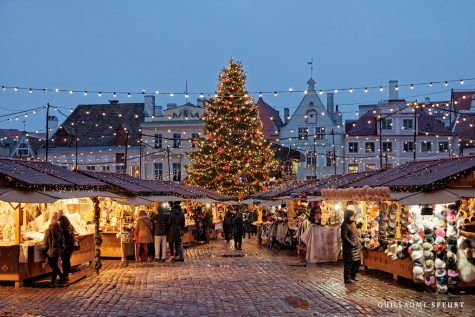Exotic Christmas Around the World

Icy air, warm lights, ornate trees, and carols with familiar melodies. This is a typical scene that one might expect for Christmas: the scene that makes many people’s heart pit-a-pat. Though Christmas was generated to celebrate the birth of Jesus, these days, at the point when nearly two millennia have passed, its meaning is extended; even non-Christians celebrate Christmas for its exciting ambience. As Christmas has become meaningful for people all over the world, one can find some Christmas events combined with exotic cultures, enabling unexpected but astonishing images.
If one visits Austria in December, he might be perplexed how similar it looks like Halloween: a medley creature of a goat and a demon roaming the streets. This is an orthodoxical Austrian culture called the Krampuslauf. Krampus is an imaginary monster who is known as the sinister companion of St. Nicholas. It appears on 5th of December, the night before the Feast of St. Nicholas. Its role is to penalise young children who misbehaved throughout the year. They usually beat them up using a stick, but even occasionally eat or take the children to hell. The appellation of this creature generated from German “Krampen,” which means literally ‘claw.’
Krampuslauf is a traditional Pre-Christmas event of Austria. Absorbing the local custom of December trade-markets, opened before Christmas and throughout the entire December, exchanging gifts before Christmas was normalised. Along with the tradition of sharing gifts not limited to the 25th, the Krampuslauf also settled down as a culture that takes place before the actual day. People dressed as Krampus promenades the streets, scaring or chasing the pedestrians.
Since the beginning of the 20th century,Austria has made numerous efforts to maintain the culture’s original meaning. These days, Krampuslauf is managed and controlled by the local community, adhering to the policies to prevent any accidents. The community hires young men who will carry out the event while following the manuals. The communities even restrict the total number of costumes to facilitate the investigation of any mishap during the event.
Christmas spirit is not limited within the western culture but is also enjoyed in the Asian culture. The giant lantern festival is a representation of the combination of oriental and western culture. As its name indicates, participants create their lanterns, competing in size, aesthetics, or function, and flying them together on the Saturday night a week before Christmas. This event used to be a religious festival called Novena, or Lubenas. As the Christmas culture pervaded internationally, it altered its purpose to the celebration of Christmas, granted the seasonal coincidence. The festival was first introduced officially in 1904, in Bacolor, Philippines, though according to the reminiscences, the virtual initiation took place in 1908. Now, the location has changed to San Fernando, Pampanga, Philippines.
Before the Giant lantern festival gained its popularity, the lanterns were relatively small, averaging two feet of diameter. As access to electricity was not generalised, the materials for making lanterns were limited. The events had to take place during the day to appreciate the designs of the lantern; the designs cannot be seen in the moonlight. But in 1931, due to the extensive supply of electricity, participants started utilising illumination devices that used electricity, enabling the event to take place after sunset. Moreover, as competition intensified, the size of lanterns were constrained to under 15 feet in diameter.
Besides such indigenous practices, there may be minor differences that branched from the common mainstream culture. For example, Norway shares a similar celebration method with other European countries, but its inherent convention is to hide brooms so that witch spirits can not use them during Christmas. In fact, what is important is that all ceremonies are existent to celebrate Christmas and feel the warmth in the frigid, maybe the opposite for some countries, of the winter.





